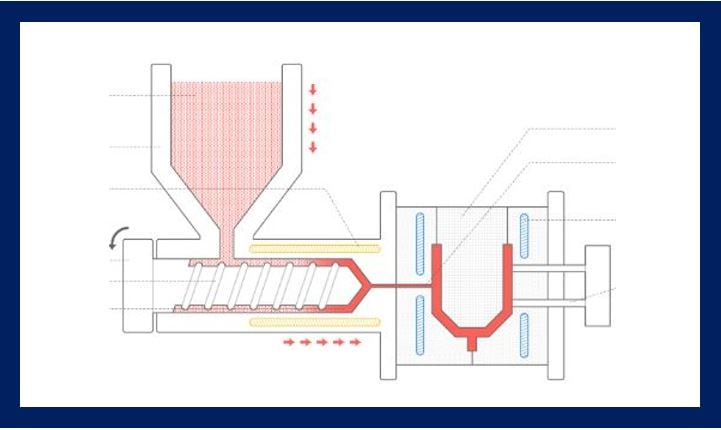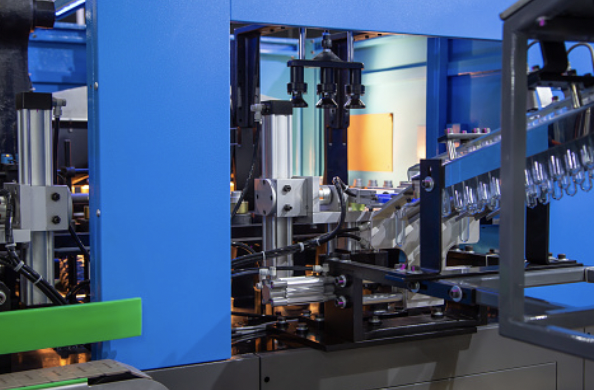
The manufacturing industry has undergone a significant transformation with the introduction of plastic injection molding, which has made it possible to create intricate and long-lasting plastic parts. At Sinomold, we understand the importance of this versatile manufacturing technique and its role in creating high-quality products. In this article, we will delve into the world of injection molding, exploring its process, advantages, applications, and more. So, let’s dive in!
Introduction
Injection molding, also known as plastic injection molding or plastic molding, is a manufacturing process that involves injecting molten plastic into a mold cavity to create complex shapes and structures. This technique is widely used across various industries, including automotive, electronics, medical, and consumer goods, to produce parts with precision and consistency.
What is Injection Molding?
Injection molding is a process where thermoplastic materials are melted and injected under high pressure into a mold cavity. After the plastic is melted, it undergoes the process of cooling and solidification, adopting the exact form of the mold cavity. The resulting plastic component or product is ejected from the mold, and ready for further finishing processes if required.
The Process of Injection Molding
The process of injection molding involves several key steps:
a. Mold Design:
A mold is designed to create the desired shape of the final product. Factors such as material selection, part geometry, and production volume are considered during the design phase.
b. Material Selection:
The right type of plastic material is chosen based on its properties, such as strength, flexibility, and heat resistance. Different materials offer varying characteristics to meet specific application requirements.
c. Melting and Injection:
The selected plastic material is heated to a molten state and injected into the mold under high pressure. The molten plastic flows into every crevice of the mold, capturing the intricate details of the product design.
d. Cooling and Solidification:
Once the plastic is injected into the mold, it begins to cool and solidify. Cooling time is carefully monitored to ensure proper solidification and dimensional accuracy of the final product.
e. Ejection:
After the plastic has solidified, the mold opens, and the product is ejected using ejector pins or plates. The mold is then ready for the next cycle of injection.
Advantages of Injection Molding
Injection molding offers numerous advantages that make it a preferred choice for manufacturing plastic components:
a. Precision and Complexity:
Injection molding enables the production of intricate and complex shapes with high precision and repeatability, ensuring consistency across large production runs.
b. Efficiency and Cost-effectiveness:
The high-speed production capabilities of injection molding result in reduced cycle times and lower production costs. The ability to manufacture multiple parts simultaneously further improves efficiency.
c. Design Flexibility:
With injection molding, designers have the freedom to create complex geometries, thin walls, and detailed features that would be challenging or impossible with other manufacturing methods.
d. Material Versatility:
Injection molding supports a wide range of thermoplastic materials, allowing manufacturers to select the most suitable material for specific applications, considering factors such as strength, flexibility, and chemical resistance.
e. Minimal Post-processing:
Injection-molded parts often require minimal post-processing, reducing the need for additional labor and time-consuming finishing operations.
Applications of Injection Molding
Injection molding finds applications in various industries, serving diverse sectors:
a. Automotive:
Injection molding is extensively used in the automotive industry for manufacturing interior and exterior components, such as dashboards, bumpers, door panels, and lighting systems.
b. Electronics:
The production of electronic enclosures, connectors, switches, and other intricate components benefits from the precision and repeatability offered by injection molding.
c. Medical:
Injection-molded parts play a critical role in the medical field, including the production of syringes, medical device components, surgical instruments, and drug delivery systems.
d. Consumer Goods:
From household appliances and toys to packaging and kitchenware, injection molding enables the mass production of a wide range of consumer goods.
Choosing the Right Plastic for Injection Molding
Selecting the appropriate plastic material for injection molding is crucial to ensure the desired properties and performance of the final product. Factors to consider include:
a. Material Properties:
Analyzing the material’s characteristics, such as strength, flexibility, impact resistance, chemical resistance, and temperature stability, helps determine its suitability for the intended application.
b. Design Requirements:
Understanding the design requirements, including part geometry, dimensional tolerances, and surface finish, aids in selecting a plastic material that can meet those specifications.
c. Cost Considerations:
Balancing material cost with performance requirements is essential to optimize the overall production cost.
Design Considerations for Injection Molding
To achieve successful injection molding, certain design considerations should be taken into account:
a. Wall Thickness:
Maintaining consistent wall thickness throughout the part minimizes the risk of defects like warping, sink marks, or voids.
b. Draft Angles:
Including draft angles on vertical surfaces allows for easy ejection of the part from the mold.
c. Ribs and Bosses:
Adding ribs and bosses to the design enhances structural integrity and provides support where needed.
d. Gate Placement:
Proper gate placement ensures uniform filling of the mold cavity, minimizing the occurrence of flow-related defects.
Steps Involved in Plastic Injection Molding
The process of plastic injection molding can be divided into the following stages:

a. Mold Clamping:
The mold is securely clamped in the injection molding machine, ensuring it remains closed during the injection and cooling process.
b. Injection:
The molten plastic is injected into the mold cavity through the sprue and runner system, filling the mold cavity and taking the shape of the desired product.
c. Cooling:
The molten plastic cools and solidifies inside the mold, transitioning into a rigid form.
d. Mold Opening:
The mold is opened, and the ejection system pushes the solidified part out of the mold.
e. Part Removal:
The ejected part is removed from the mold, either manually or using automated mechanisms.
f. Repeat:
The process is repeated to produce the desired quantity of parts.
Interesting Related Article: “Estimating the Cost of Injection Molding“














